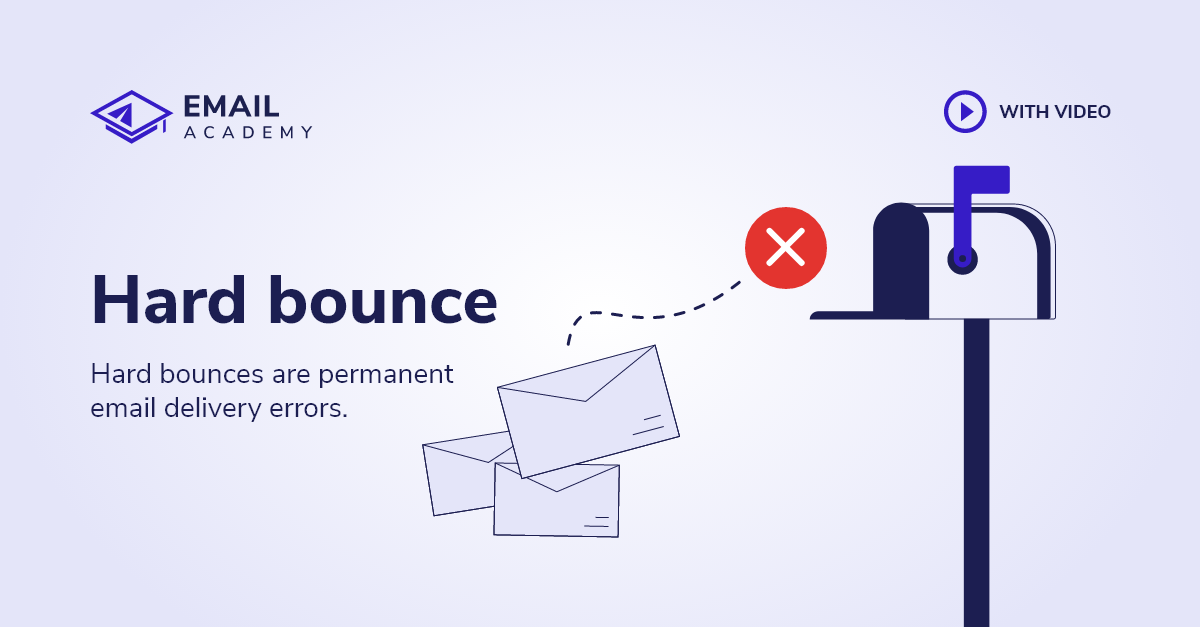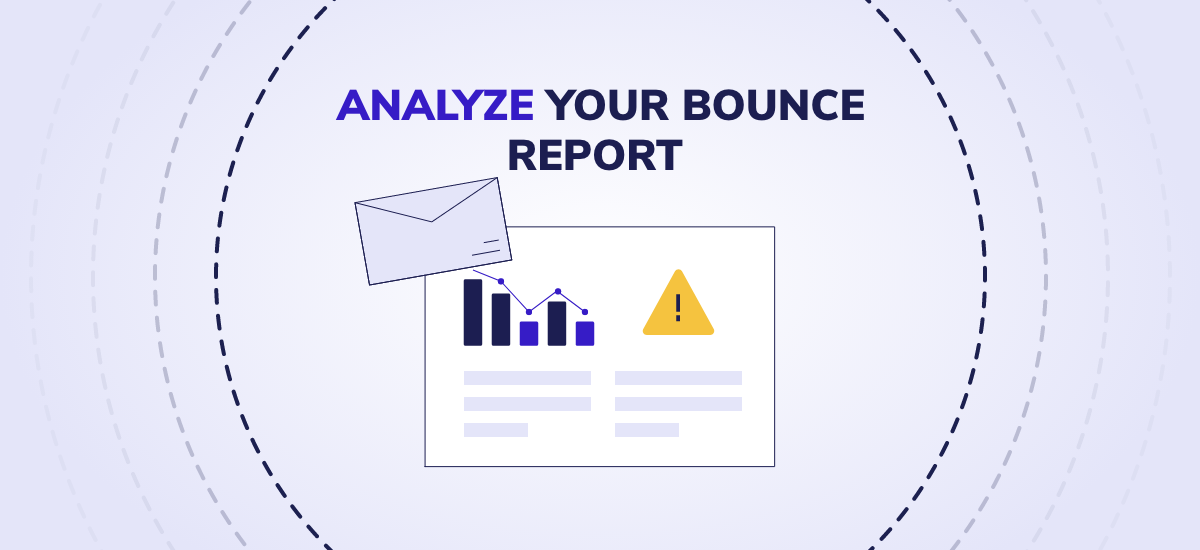What is a soft bounce?
Courses: Email Bounce
Create: 1795 days ago
Update: 1095 days ago
Reading time: 3 min
Soft bounces are temporary email delivery errors that you might experience when sending an email marketing campaign.
By the end of this lesson, you will learn
- what soft bounces are,
- what they mean to your campaign,
- what actions you need to take to reduce your soft bounce rate.
Bounces in general
Bouncing emails are email delivery failure notifications. Receiving a bounce email means your email wasn’t delivered to the recipient. A high email bounce rate can damage the reputation of your email sending account.
There are several possible reasons for not being able to deliver emails. Some of them are temporary reasons, and some are permanent.
The difference between hard and soft bounces

While
hard bounces
 What is a hard bounce?
Hard bounces are permanent email delivery errors that you might experience when sending an email marketing...
Read more »
mean permanent delivery errors, soft bounces are temporary errors. You can learn more about the differences in our lesson about the difference between soft and hard bounces.
What is a hard bounce?
Hard bounces are permanent email delivery errors that you might experience when sending an email marketing...
Read more »
mean permanent delivery errors, soft bounces are temporary errors. You can learn more about the differences in our lesson about the difference between soft and hard bounces.
A temporary error means you can deliver an email to the recipient if the reason for the soft bounce is prevented. To prevent the soft bounce you experienced, you first need to understand
why the soft bounce occurred
 Why emails bounce back?
Technically email bounces are delivery failure notification emails. From the notification email, you can f...
Read more »
.
Why emails bounce back?
Technically email bounces are delivery failure notification emails. From the notification email, you can f...
Read more »
.
The main reason for soft bounces
There are countless reasons for soft bounces. However, most of the time, a soft bounce occurs when the recipient email server finds your email very likely to be spam.
Email servers work hard to avoid any spam emails delivered to their users. They use spam filters to evaluate all incoming email, whether it is spam.
Spam filters

Spam filters are bots that analyze your email from top to toe to evaluate the likelihood of whether it is spam or a legitimate email. They scan your entire email, including the subject, the content, analyze images, and links.
Spam filters, most of the time, only determine if your email can be delivered in the Inbox or the Spam folder. However, in many cases, they can refuse the delivery at all. When a spam filter rejects your email, you should find the reason for your bounce in the delivery failure notification email.
The effects of having a high soft bounce rate

Having a higher-than-normal soft bounce rate
gives you an unfair disadvantage
 High Email Bounce Rate Will Kill Your Campaigns
Email marketing tools emphasize the importance of bounce rate for a good reason. A high bounce rate is a c...
Read more »
because having any kind of bounces may increase your soft bounces. Meaning if you have soft bounces, you will have an ever-increasing bounce rate.
High Email Bounce Rate Will Kill Your Campaigns
Email marketing tools emphasize the importance of bounce rate for a good reason. A high bounce rate is a c...
Read more »
because having any kind of bounces may increase your soft bounces. Meaning if you have soft bounces, you will have an ever-increasing bounce rate.
- You will deliver fewer emails because of your increasing bounce rate.
- Most of your emails will land in spam folders.
- Ultimately you will not reach your recipients, causing your business severe damage.
- Your email account can be suspended or closed due to your high email bounce rate, putting your business at risk.
How to reduce the soft bounce rate?

As you can see, soft bounces have a severe effect on the success of your email campaigns, as well as on the profitability of your business.
To reduce your soft bounce rate, first, you need to analyze your bounce report understand why your emails were rejected by the recipient email server(s). You can read about the most typical reasons for soft bounces as well as about the next steps you need to take to avoid soft bounces in EmailAcademy.
Conclusion
Soft bounces are temporary email delivery errors. Even though they are temporary errors, they can severely affect your campaign and your business.
The main reason for having a high soft email bounce rate is that spam filters find your emails potentially spammy.
To eliminate your soft bounces:
- Find out the reason for your bounces.
- Understand what is behind the reasons.
- Take action today.


